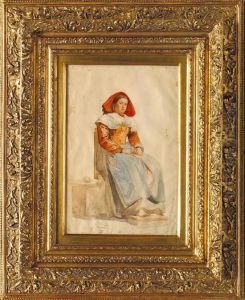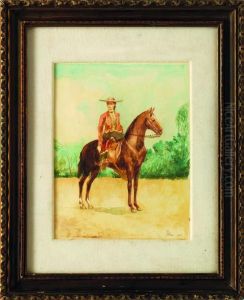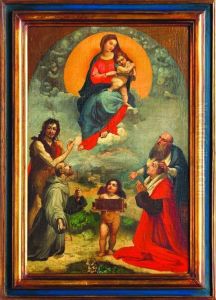Jose Salome De Pina Paintings
Jose Salome Pina, often referred to as Jose Salome de Pina or simply Salome Pina, was a Mexican painter, recognized for his contributions to portraiture and his adherence to academic painting traditions. He was born on October 13, 1869, in Aguascalientes, Mexico.
Pina showed an early interest in art and was fortunate to receive formal training. He attended the renowned Academy of San Carlos in Mexico City, where he was a pupil of Santiago Rebull and Jose Salome Pina, after whom he was named. Pina's training at the Academy was rooted in the classical European tradition, and he became adept at both drawing and painting, with a particular emphasis on portraiture.
Throughout his career, Pina's works often depicted notable figures in Mexican society, including politicians, intellectuals, and members of the elite, which earned him a reputation as a skilled portraitist. His portraits are characterized by a strong sense of realism, attention to detail, and an ability to capture the personality and status of his sitters.
In addition to portraiture, Pina was also known for his religious and genre paintings. He embraced the academic style and was less influenced by the avant-garde movements that were emerging in Europe during his lifetime. This conservative approach to painting meant that, while he was revered in his time for his technical skill, he did not contribute to the radical changes in art that characterized the early 20th century.
Pina's work was recognized with awards and honors during his lifetime. He exhibited his paintings in Mexico as well as internationally, and his works were collected by both private patrons and public institutions. Despite the rise of modernist sensibilities that overshadowed the academic style, Pina remained committed to his artistic principles until his death on July 29, 1952.
While not as widely known today as some of his contemporaries who embraced modernism, Jose Salome Pina's paintings remain a testament to the technical prowess and cultural heritage of late 19th- and early 20th-century Mexican academic art. His portraits, in particular, continue to be appreciated for their historical value and craftsmanship.


